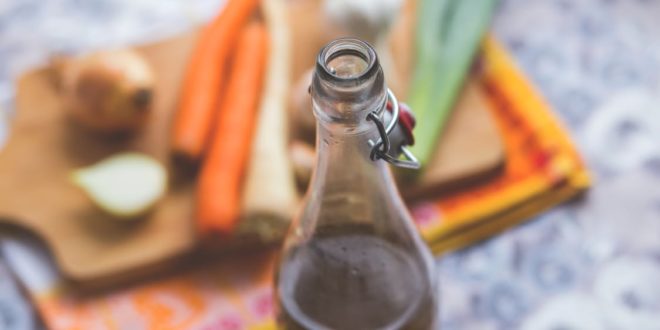Every year, consumer rich countries like New Zealand waste over 220 million tonnes of food. To put this into perspective, this is almost the entire net food production of sub-Saharan Africa. Lost your appetite? We don’t blame you.
While it’s an enormous responsibility to commit to a zero waste household, we’re passionate believers in the concept that even the smallest of efforts can make a big difference. So, to help keep your plates full and your rubbish bins as empty as possible, we’ve put together a list of tried and tested kitchen tips that’ll help you breathe new life into food scraps.
Learn to love your freezer
Are your bananas going a little brown? Is your spinach lacking lustre? Maybe your strawberries are on their way out? Whatever fruit or veg is nearing the end of its life, simply prep it, throw it into a freezer bag and save it for later. You can also freeze herbs, with Jamie Oliver himself testifying that herb butter ice blocks are a restaurant quality secret.
The beauty of bones
In the past, bones were used to carve tools, jewellery and weapons. Today, we’re advocating for an approach that’s a little more modern, yet just as useful. From chicken to beef, simmering bones in water unleashes a jackpot of protein, nutrients, minerals and amino acids. Use your broth to make soup, gravy, stews and other hearty delights. If you nurture a green thumb, you can also treat your garden to a homemade bone meal fertiliser.
Back to bread
No one enjoys stale bread, but with a little creativity, you can turn your crusts into crispy morsels of deliciousness. Homemade croutons are incredibly easy to make, while freezing breadcrumbs is a great way to guarantee a beefed-up Christmas stuffing.
 Handmade dyes
Handmade dyes
If you’re a self-confessed hippy, diehard environmentalist or hopeless creative, you’ll jump at the chance to recycle peels and other colourful scraps into homemade dyes. Think beetroots, oranges, lemons, spinach, red cabbage and yellow onions. This is a fantastic tutorial on natural dyes, and we’d love to see pics of your success stories!
Mother Nature approved cleaning agent
Forget chemicals and other nasties. Armed with little more than vinegar, water and a handful of citrus peels, you can make powerful cleaning agents that smell divine. Vinegar is loaded with anti-bacterial, anti-fungal and grease dissolving properties, while lemon, lime and orange peels bring a fresh scent. Simply place the peels in a jar, soak in vinegar for two weeks, strain, transfer to a spray bottle and get to work making your home sparkle!
DIY veg stock
Compost mounds are a wonderful way to reuse your organic scraps, but if you’re craving something a little more exciting why not try a DIY stock recipe? Using everything from peels and skins to stems and leaves, you can make a nutritious, preservative-free stock using nothing more than water. Beats salty supermarket cubes any day!
Grow your own
Buy once, grow forever! Did you know that there are a myriad of herbs, fruits and vegetables that you can regrow using little more than a seed, scrap or root?
 Wine not?
Wine not?
The sense of despair that ensues when you realise your wine’s gone bad is dramatic to say the least. But, rather than cry over bad wine, why not experiment with new ways to enjoy it without a glass? Try making wine vinegar, reduce it into a sauce or embrace the slightly quirky ‘vinotherapy’ trend.
Perk up coffee dregs
If you’re anything like us, your kitchen is continually overflowing with coffee dregs. Rather than give your compost heap a caffeine kick, why not get creative with recipes that perk up your used coffee grounds? Coffee ice cream? Mocha popsicles? Molasses pork chops? Yes please.
Cracking the eggshell code
Just fried up a Sunday morning extravaganza? Save your eggshells, grind them up in a food processor and treat your garden to a healthy dose of calcium. Some people also swear that placing half eggshells strategically around vegetable patches keeps pesky moths at bay. Craving more inspiration? Here’s even more ways to reuse eggshells, from the garden to the kitchen and beyond.
Beyond the brew
Addicted to tea? You’ll be surprised at how many amazing ways there are to reuse soggy teabags. From garden fertilisers and air deodorisers to hair conditioners and natural dyes, used teabags can be so much more than simply a soggy mess.
A dog’s dinner
True, dogs may eat more or less anything. But kitchen scraps like pumpkin, coconut oil, cinnamon and watermelon can also be a fantastic source of nutrients for your furry friends. That said, you will need to exercise some caution as certain foods can be harmful to their health.
Get organised
Reusing scraps, leftovers and old food is a fantastic way to rekindle the love with your kitchen. But we’re the first to admit that an overflowing fridge, freezer and compost bin can become a little overwhelming. So, to keep food scraps to a minimum try embracing the concept of a ‘smart’ kitchen. A quick weekly meal planning session and a strategic supermarket shop on a Sunday afternoon can work wonders for both your stress levels, your health and of course, your food wastage situation.
Got any bona fide tips on how to breathe new life into the food scraps that will inevitably grace your kitchen? We’d love to hear them, lets us know in the comment section below!










Join the Discussion
Type out your comment here:
You must be logged in to post a comment.